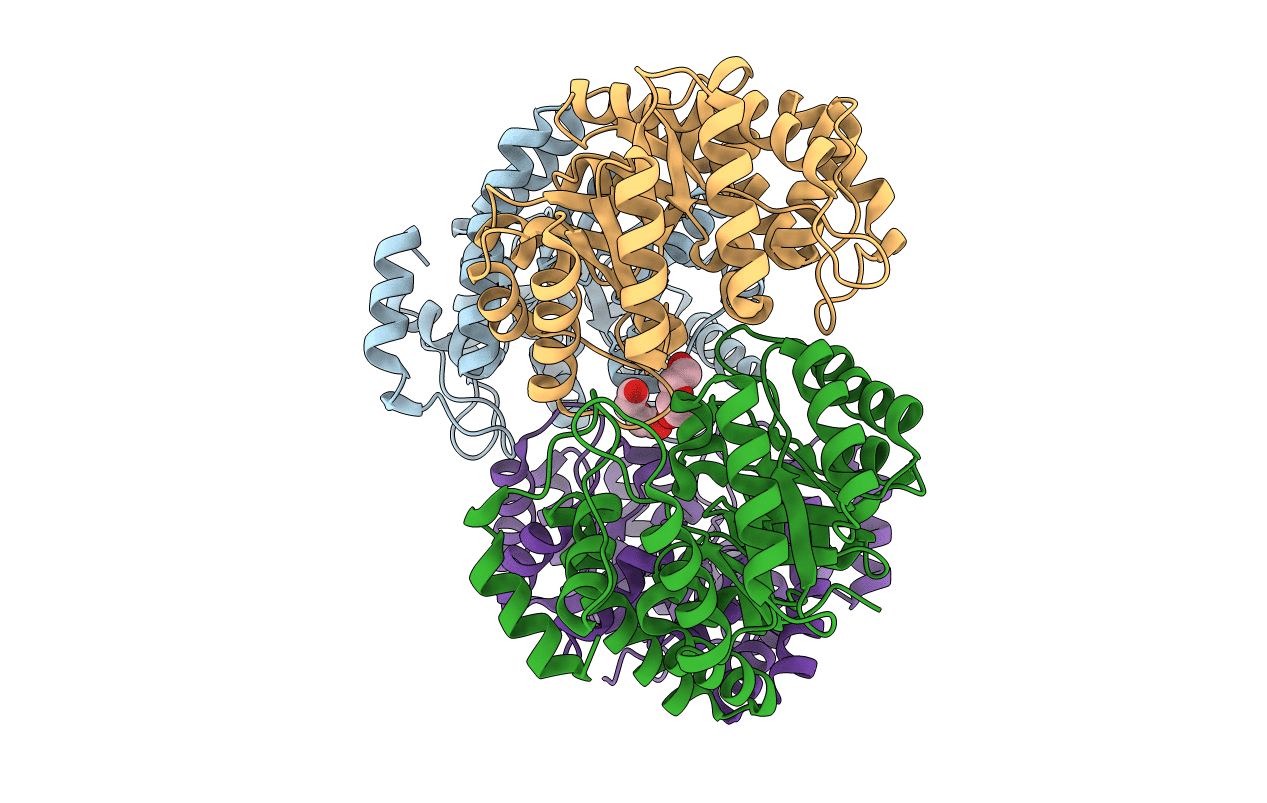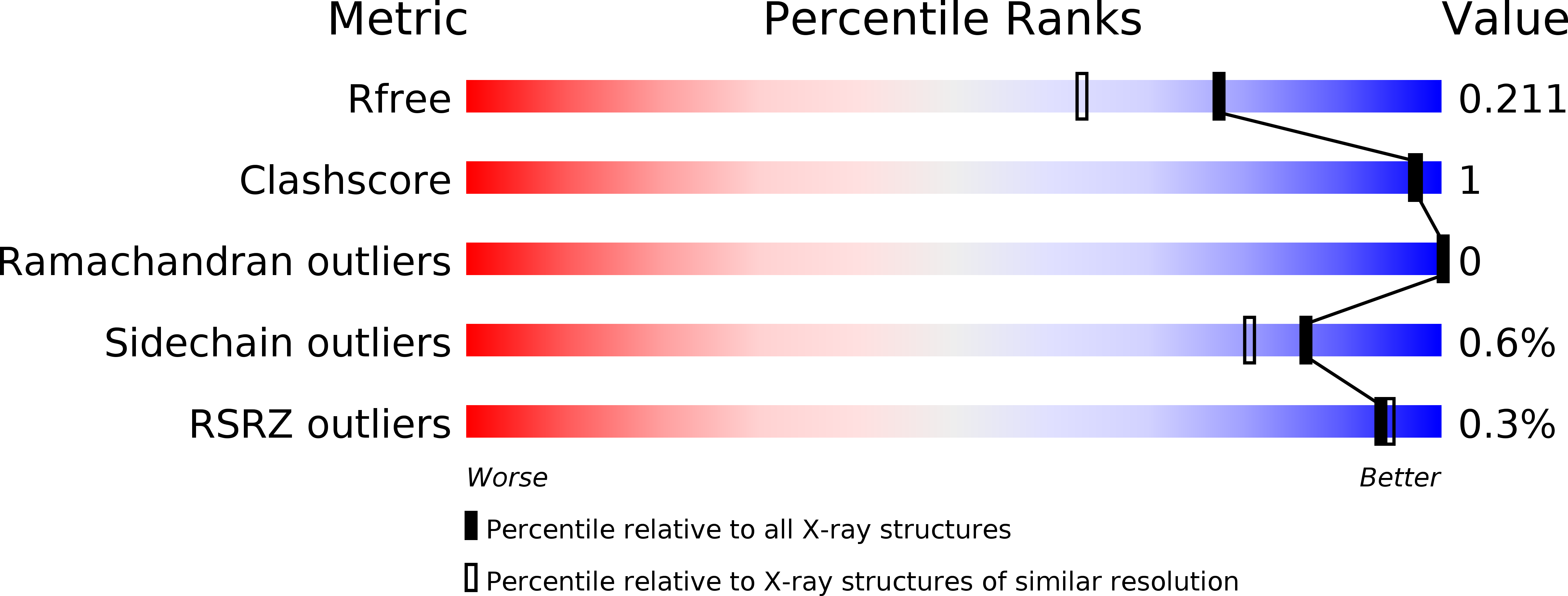
Deposition Date
2016-07-25
Release Date
2017-03-22
Last Version Date
2024-01-10
Entry Detail
PDB ID:
5LKY
Keywords:
Title:
X-ray crystal structure of N-acetylneuraminic acid lyase in complex with pyruvate, with the phenylalanine at position 190 replaced with the non-canonical amino acid dihydroxypropylcysteine.
Biological Source:
Source Organism:
Staphylococcus aureus (strain NCTC 8325) (Taxon ID: 93061)
Host Organism:
Method Details:
Experimental Method:
Resolution:
1.70 Å
R-Value Free:
0.20
R-Value Work:
0.17
R-Value Observed:
0.17
Space Group:
P 1 21 1


